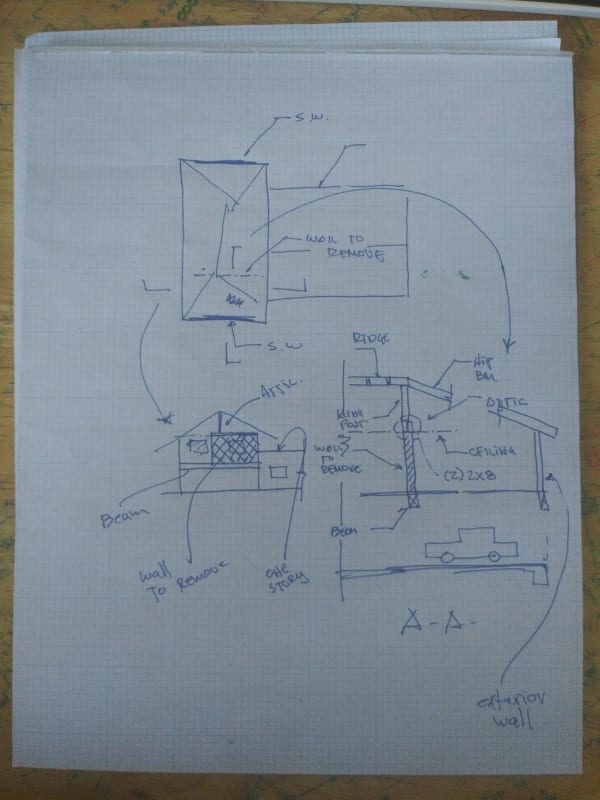Mountainrunner
Structural
- May 25, 2020
- 8
Question...
I know a shear wall transfer loads from the roof....but....could a shear wall stop at the floor of an uninhabited / non storage attic and still be considered / designed as shear wall....could the attic joist sitting on top of wall be used as collectors transfer loads from the roof...(attic joists are nailed to rafters)..
Could this be done?....
I ask because my client wants to remove a wall and existing drawings call the wall a SW...but...wall stops at attic...it does not go to the roof...
May be there is a provision in which the shear wall could stop at the attic and still be used as sw....using the attic floor joists as dragging collectors..I attached 2 pics....one picture of the attic...the king post rest on the wall to remove....and a sketch of the condition...
To me such condition is just a bearing wall not a shear wall....

.

any advice....thks
I know a shear wall transfer loads from the roof....but....could a shear wall stop at the floor of an uninhabited / non storage attic and still be considered / designed as shear wall....could the attic joist sitting on top of wall be used as collectors transfer loads from the roof...(attic joists are nailed to rafters)..
Could this be done?....
I ask because my client wants to remove a wall and existing drawings call the wall a SW...but...wall stops at attic...it does not go to the roof...
May be there is a provision in which the shear wall could stop at the attic and still be used as sw....using the attic floor joists as dragging collectors..I attached 2 pics....one picture of the attic...the king post rest on the wall to remove....and a sketch of the condition...
To me such condition is just a bearing wall not a shear wall....

.

any advice....thks

